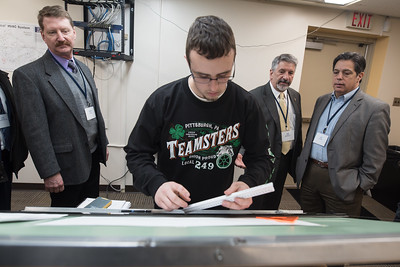What’s the first thing that comes to mind when you think about Pittsburgh? If you said “coal” or “steel” you haven’t been to Pittsburgh lately. In 2023, Steel City actually has no operating steel mills within its city limits. The steel industry isn’t completely gone, but the last three surviving steel mills have been pushed out to the suburbs. Taking steel’s place are the healthcare, technology, and finance sectors, which have flourished, thanks to more than $10 billion in investments in the past two decades.
At the beginning of the industrial revolution, Pittsburgh staked out the steel industry, thanks in part to Andrew Carnegie, who turned US Steel into the world’s largest private corporation. Between 1870 and 1910, the city’s population grew from 80,000 to more than 530,000. That’s roughly equivalent to turning Pittsfield and Ypsilanti Townships into a Detroit-sized city in just four decades. It took just three decades to drive steel production completely out of the city.
Most of the damage occurred in the 1980’s. During that time, Pittsburgh lost nearly 250,000 steel and manufacturing jobs. By 1990, there was virtually nothing left of the industry that put Steel City on the map. The city lost half of its population between 1950 and 1990. With the city and its residents so heavily dependent upon steel and manufacturing, there was little left to work with.
If Pittsburgh was going to survive, it would have to restructure its economy entirely. And the city has done just that. Pittsburgh is still not as large as it was at the height of its population, but its population is steadily increasing. Healthcare is now a primary industry in Pittsburgh, along with technology, and finance. These industries combine to provide more than one-third of all employment in the City.
Community colleges contribute to the Pittsburgh economy
Pittsburgh’s demographic characteristics are changing. The city is becoming younger, as more recent graduates flood in to fill coveted technology sector jobs. More than half of the women of prime working age in the city are employed.
Research recently published by the RAND Corporation showed that “sub baccalaureate” workers in the city’s science and technology fields (STF) have a major economic impact and promote additional employment opportunities within those sectors. 30% of the current STF jobs do not require a bachelor’s degree, and half of the highest-growth STF jobs in the next decade will be filled by workers without a four-year degree. RAND’s research found that every STF job in the city creates another non-STF job somewhere in the Pittsburgh metropolitan area – mostly through the increased spending by STF workers.
In other words, community colleges can play a significant role in the redevelopment of a regional economy. Further, it doesn’t take that long to completely reformulate an economic makeover. What’s happening in Pittsburgh is the result of a lot of regional coordination and cooperation. The city didn’t try to resurrect the steel industry. Instead, it looked elsewhere for opportunities to diversify its economy.
In 2023, the Washtenaw County taxpayers will send $70M to Washtenaw Community College. Exactly what are we getting in return, and how is that reflected in the Washtenaw County economy?
Photo Credit: Justin Merriman/EE Image Database , via Flickr





















